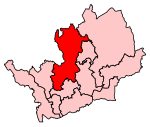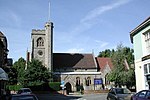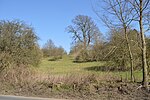Welwyn Roman Baths

The Welwyn Roman Baths are a Roman ruin preserved under the A1(M) just north of modern-day Welwyn Garden City, Hertfordshire, England. The baths were a small part of the Dicket Mead villa, which was originally built in the 3rd century AD. The village of Welwyn has been described as being the site of a Romano-British settlement, where a Roman road crossed the river Mimram. There was another Roman villa near Welwyn on the Lockleys estate. The full extent of the Dicket Mead villa was never fully excavated prior to the construction of the motorway, but the baths were only one of at least four buildings in total. The complex was probably part of a farm. It has been speculated that it might have been at least in part the equivalent of a hotel, lying as it does near Roman roads. The ruins were uncovered in 1960 by local archaeologist Tony Rook, and the baths were gradually uncovered over the following 10 years by excavation. Shortly after the excavation was completed, the Ministry of Transport announced the route of a new motorway, straight over the top of the excavation.
Excerpt from the Wikipedia article Welwyn Roman Baths (License: CC BY-SA 3.0, Authors, Images).Welwyn Roman Baths
Prospect Place, Welwyn Hatfield
Geographical coordinates (GPS) Address Nearby Places Show on map
Geographical coordinates (GPS)
| Latitude | Longitude |
|---|---|
| N 51.8277 ° | E -0.2081 ° |
Address
Prospect Place 46
AL6 9ER Welwyn Hatfield
England, United Kingdom
Open on Google Maps




